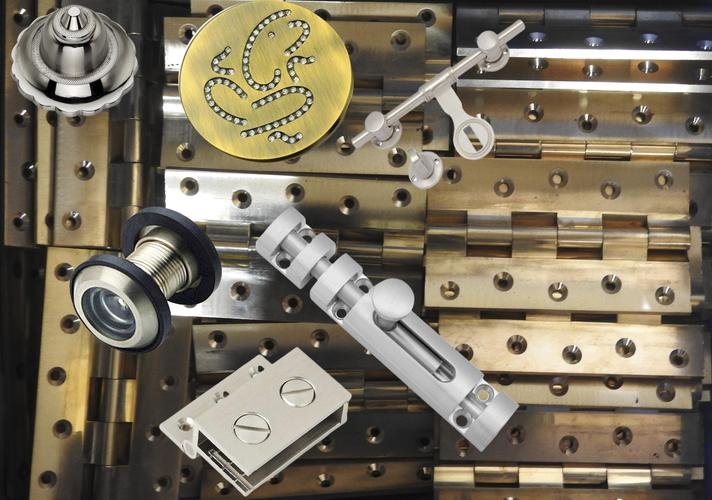BRASS
Brass, alloy of copper and zinc, of historical and enduring importance because of its hardness and workability. The earliest brass, called calamine brass, dates to Neolithic times; it was probably made by reduction of mixtures of zinc ores and copper ores. In ancient documents, such as the Bible, the term brass is often used to denote bronze, the alloy of copper with tin.
Brass is part of Metal crafts The malleability of brass depends on the zinc content; brasses that contain more than 45 percent zinc are not workable, either hot or cold. Such brasses, known as white brasses, are of little industrial importance, though a granulated form is used in brazing (soldering); they also form the basis for certain alloys used in die-casting. The malleable brasses may be further subdivided into those that can be worked cold (generally those with less than 40 percent zinc) and those with a greater zinc content, which require hot working. The former group, known as the alpha brasses, are widely used in the manufacture of pins, bolts, screws, and ammunition cartridge cases. The beta brasses are less ductile but stronger and thus are suitable for the manufacture of faucet handles, sprinkler heads, window and door fittings, and other fixtures. A third group of brasses includes those with other elements besides copper and zinc, added to improve physical and mechanical properties, corrosion resistance, or machinability or to modify colour. Among these are the lead brasses, which are more easily machined; the naval and admiralty brasses, in which a small amount of tin improves resistance to corrosion by seawater; and the aluminum brasses, which provide strength and corrosion resistance where the naval brasses may fail.
Kamrupi Kamrupi Brass and Bell Metal productsof Kamrup are famous for their beauty and strength of form and utility. Brass is an important cottage industry, with highest concentration in Hajo, while Sarthebari is well known for its bell metal craft. The principal items of brass are the kalah (water pot), sarai (a platter or tray mounted on a base), kahi (dish), bati (bowl), lota (water pot with a long neck) and tal (cymbals). Gold, silver and copper too have formed part of traditional metalcraft in Kamrup, and the State Museum in Guwahati has a rich collection of items made of these metals. Gold is generally used in ornaments.
Brass types
Brass types define on the percentage of copper and zinc in the brass.
Alpha brasses : Copper zinc ration is > 65 < 35 out of 100 respectively
Alpha-beta brasses : Copper zinc ration is 55–65 35–45 out of 100 respectively
Beta brasses : Copper zinc ration is 50–55 45–50 out of 100 respectively
Gamma brasses : Copper zinc ration is 33–39 61–67 out of 100 respectively
White brass : Copper zinc ration is < 50 > 50 out of 100 respectively

Brass Prodcts type
Brass & Brass Products (Industrial), Brass Castings, Brass Components, Brass Cutting, Brass Electrical Products, Brass Engravers, Brass Fin Tubes, Brass Finned Tubes, Brass Fittings, Brass Labels, Brass Pipes, Brass Powder, Broass Rolling Mills, Brass Sheets, Brass Strips & Foils, Brass Tube Fittines, Brass Tubes, Brass Utencils, Brass Valves, Brass Wires (Cables), Brass Cables, Brass Fittings, Brass Parts Machinery, Brass Strips & Foils, Brass Wire Drawing. etc